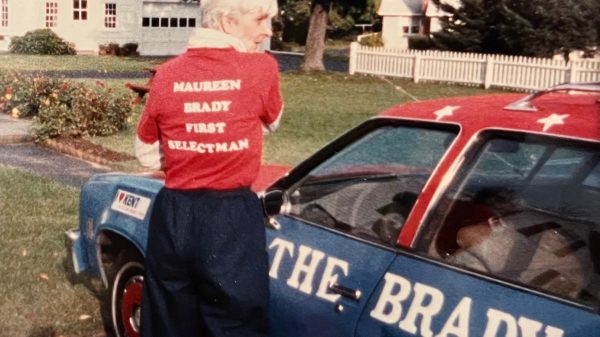My parents, both notably caring people, did not do their children any good when it came to dental genetics. They spent a small fortune on our oral care as we grew up but, in this case, nature won out over nurture. All of us required advanced dentistry to keep our teeth anywhere near pearly and white.

We, of course, date from the mid-20th century, an era now popular with nostalgic antiques collectors but less alluring when it comes to memories of dental care. I used to say my one reason for being on this Earth was to represent in one skull a complete record of 20th-century dentistry for future archaeologists. Last week, even that ambition was dashed, when I opted for a full mouth reconstruction, with implants that my prosthodontist assures me will never chip, stain, rust or break. He demonstrated their durability by slapping his model hard against his desk. I, who broke my front tooth at age 7 playing football with a croquet ball, was impressed.
What impressed me even more was the price tag. With a straight face, he said $72,000. I thought, “Okay, let me just pull that out of my back pocket and we can get started.” There followed months of negotiations, different plans, eventual agreement and another job to build my “tooth fairy account.”
During the course of my deliberations, my thoughts turned often to the history of dental health in this country. Good teeth have always been alluring. A white smile and pleasant breath were admirable attributes in Medieval Europe and by the 1600s, Louis XIV’s official court historian listed among his ideals for beauty teeth that were “middle-sized, white, well-ranged.” Alas, this feature was rarely encountered—at least among the well-to-do who could afford to eat sweets.
One of history’s most famous sufferers was George Washington. Some historians believe Washington’s dental decline resulted from mercury used to treat the smallpox he suffered as a teenager, but by the time he was inaugurated on April 30, 1789, the 57-year-old president had only one tooth left—sweet or not. The poor man endured agonies in his attempt to restore his smile, having at least four dentures crafted. He took the oath of office wearing his Sunday best, a special set of dentures made from ivory, brass and gold.
One of his other dentures was a cumbersome affair with a lead base supporting teeth harvested from horses, mules and even hippopotami. The lead base had a gruesome-looking spring that allowed him to open his jaws to speak, but that also required him to forcibly clamp his jaws shut. No wonder he was the strong, silent type.
According to his diaries, Washington’s dentures disfigured his mouth and often caused him pain, for which he took laudanum. He sought other means of restoration, as well. While historians disagree about whether he used them, in May 1784, Washington paid several unnamed slaves 122 shillings (equivalent to $992) for a total of nine teeth to be implanted by a French doctor.
Washington was among the 18th-century landed elite with an estate valued at approximately $429 million in today’s currency. He could afford dental care, no matter how ineffective it was. But what about the common man?
Most people had to resort to barber/surgeons, who would simply remove diseased teeth, with the consequence that the patient could not eat effectively or, in worst circumstances, might die of complications.
Sadly, the situation has not changed much. The Center for Health Care Strategies reported four years ago that 44 percent of low-income adults, aged 24 to 64, had untreated cavities. An estimated 68.5 million adults in the United States do not have dental insurance, according to a September 2023 State of Oral Health Equity in America survey. And an estimated 14 million more adults in the U.S. lost Medicaid dental insurance with the expiration of Covid emergency funding.
Traditional Medicare does not cover routine dental care; therefore, many lose benefits upon retirement, and required Medicaid dental programs end at age 21. I know one young man who actually joined the military just to get dental care.
Even with dental insurance (costing $20–$50 per month for an individual and $50–$150 per month for a family), the picture may be grim. Insurance may provide only a few hundred dollars of relief after deductibles and co-pays. For some, the cost of the insurance is more than the benefits, with annual allowances that often top out at $1,000 to $2,000.
Say you need a crown. Typically, costs are $1,000 and more. Your insurance plan will probably decree it is a cosmetic procedure, whether it is necessary or not. Top payment: 50 percent. Need a bone graft and a dental implant? Forget it. Implants are not covered at all, even though they are the treatment preferred by dentists for better health.
All this comes with a cost, both to the individual and the public. The link between dental health and overall wellbeing is well established. According to the CDC, more than $45 billion is lost in productivity in the United States each year because of untreated oral disease. Among the diseases the Mayo Clinic says may result from oral disease are endocarditis, cardiovascular disease that can lead to strokes, premature births and low birth weights, pneumonia and respiratory diseases.
Given these facts, it appears to me that this nation is short-sighted in not providing at least minimal dental care for all its people. George Washington paid a lot for a little. In the 21st century, a little investment in preventive care could yield a lot in dividends.
Kathryn Boughton is Editor of the Kent Good Times Dispatch. Views expressed in Out on a Limb are hers alone and do not necessarily reflect the opinion of Kent News Inc.


























